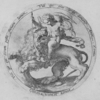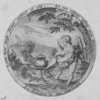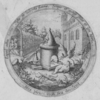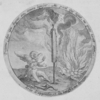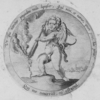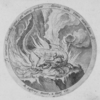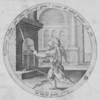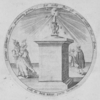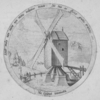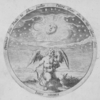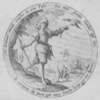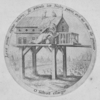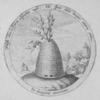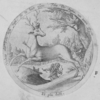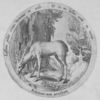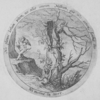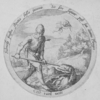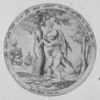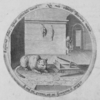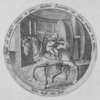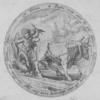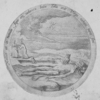Te stante virebo [14]
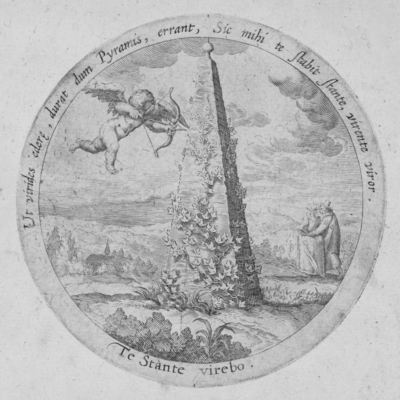
14. Te
stante1 virebo.



Haer leven is het mijn/ mijn blijtschap moetse geven/
Haer Vreuchden zijn de mijn/ een ziele doet twee leven.
Als ick maer eens den dau2/ den dau van hare juecht
Mach Voelen op mijn hert/ soo word ick gantsch verheucht.
O dat zy maer en wou den cracht van haere straelen
Tot op den diepen grondt mijns herten laeten daelen.
Mijn leven dat ick voer/ en heb ick maer tot pandt/
Die ick Vercoren hebb’ die draeght my in haer handt.
Haer Vreuchden zijn de mijn/ een ziele doet twee leven.
Als ick maer eens den dau2/ den dau van hare juecht
Mach Voelen op mijn hert/ soo word ick gantsch verheucht.
O dat zy maer en wou den cracht van haere straelen
Tot op den diepen grondt mijns herten laeten daelen.
Mijn leven dat ick voer/ en heb ick maer tot pandt/
Die ick Vercoren hebb’ die draeght my in haer handt.

Translations
 |
Als jij staat, bloei ik. |
 |
When you stand I flourish. |
 |
Zoals klimop fris slingert rond een obelisk zolang die rechtop staat, zo staat mijn kracht als jij fier staat. |
 |
Just as green ivy entwines an obelisk as long as it remains standing, thus my strenght stands as long as you stand upright. |
Literature
-
Henkel and Schöne, Emblemata
 , col. 1223
, col. 1223
-
Praz, Seventeenth-Century Imagery
 , p. 95
, p. 95
Sources and parallels
- Same emblem in 1608 edition: Te stante virebo [14] (in: Daniël Heinsius, Emblemata amatoria (1607/8))
[Compare
![Compare [compare]](/static/images/compare2.gif) ]
]
- A probable source for the motto and pictura: Ruscelli, Imprese illustri
 , p. 1123
, p. 1123 - A source for the pictura (the emblem carries another message): Junius, Emblemata [web]
 , embl. 14
, embl. 14
- A source for the motto and pictura (the emblem carries another message):
Paradin, Princeliicke Deviisen
 , embl. 42
, embl. 42
- A parallel for the motto and pictura: Rollenhagen, Nucleus emblematum selectissimorum
 , bk/embl.
II/68
, bk/embl.
II/68 - A parallel for the motto and pictura: Camerarius, Symbolorum & emblematum centuriam
 , bk/embl.
I/63
, bk/embl.
I/63 -
Parallel in the 1616 edition: motto, pictura and subscriptio are the same: Te stante virebo. [38] (in: Daniël Heinsius, Ambacht van Cupido, from: Nederduytsche poemata (1616))
[Compare
![Compare [compare]](/static/images/compare2.gif) ]
]
References, across this site, to this page:
- Te stante virebo [14] (in: Daniël Heinsius, Emblemata amatoria (1607/8))
- Te stante virebo. [38] (in: Daniël Heinsius, Ambacht van Cupido (1613))
- Te stante virebo. [38] (in: Daniël Heinsius, Ambacht van Cupido, from: Nederduytsche poemata (1616))
Iconclass
Cupid aiming an arrow at a couple of lovers from behind an obelisk, overgrown with ivy- plants and herbs: ivy (+ other characteristics of plant growth)
[25G4(IVY)(+39)(CLIMBING)]

- landscapes in the temperate zone
[25H1]

- floating in the air
[31A2763]

- arm in arm (lovers)
[33C231]

- needle, obelisk (marking grave)
[42E361]

- Dependence (+ emblematical representation of concept)
[51EE1(+4)]

- (personifications and symbolic representations of) Love; 'Amore (secondo Seneca)' (Ripa) (+ emblematical representation of
concept)
[56F2(+4)]

- proverbs, sayings, etc. (with TEXT)
[86(TE STANTE VIREBO)]

- Cupid shooting a dart
[92D1521]

![[H O M E : Emblem Project Utrecht]](/static/images/rd-small.gif)


